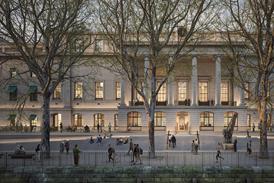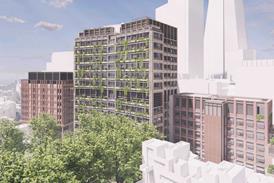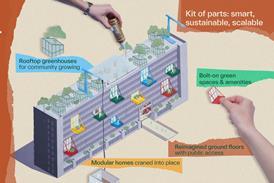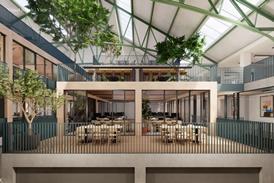Cultural institutions propose major public realm improvements - and shops in Beech Street tunnel
Hawkins Brown and Fluid are working on an initiative to transform a stretch of the City of London into a cultural destination that could include creating shop fronts along the Barbican’s Beech Street tunnel.
The Culture Mile would stretch from Farringdon to Moorgate, linking institutions like the Museum of London at Smithfield, the Barbican – and the proposed Centre for Music which is planned for the MoL’s current site.
Much of the 10- to 15-year project will involve improving the public realm, including Beech Street, dubbed “London’s most horrible” by Time Out.
It could have retail units introduced to make it more inviting to pedestrians and cyclists. Improving access to the Barbican Centre and finding ways to mitigate – or even remove – traffic and pollution are other considerations for Beech Street, a key stretch of the “mile”.
A feasibility study has been completed by Hawkins Brown and, over the next 12 to 18 months, a professional team will be appointed and a planning application lodged.
Catherine McGuinness, policy chairman at the City Corporation, said it was too early to say whether architectural competitions would be involved in the “transformational” project.
But Nick Kenyon, managing director of the Barbican, said they were gratified by the calibre of architects bidding to design the Simon Rattle concert hall. “So we would really hope everything done in this project would be done at the highest level,” he said.
The shortlist published earlier this month includes Gehry, Foster, Piano and Levete. The Museum of London’s new home is being designed by Stanton Williams and Asif Khan.
Meanwhile Fluid is working on a new public realm strategy to connect the area’s key institutions with attractive spaces.
“We have a lot to do because this is not the most appealing and connected public realm in London,” said Kenyon.
Sharen Ament, director of the Museum of London, said she was keen to take her programme outside into spaces they could be proud of. “We have to fight against our infrastructure at the moment,” she said.
Other aspects of the Culture Mile plan include outdoor events and pop-ups such as neon artwork created by Morag Myerscough for “drab” Silk Street, a community garden on Moor Lane and lighting installations by Playable City and Chomko & Rosier.
The Culture Mile plans are partly a response to the huge extra visitor numbers expected once Crossrail opens in December next year, but Brexit has given them an “added sense of urgency”, said Kenyon.
“London is still going to be a world capital of culture,” he said. “Seventy percent of visitors come here for our heritage and culture and we need to develop new infrastructure for the 21st century if that’s to go on flourishing.”
“What better time to do this than in the face of Brexit, to send a really strong signal that London is and always will be a welcoming and resolutely international city,” said McGuinness.
Andrew Parmley, the Lord Mayor, said they wanted to enhance the City’s creative reputation for future generations, adding: “Business, banks and big bucks are not the be-all and end-all of this great place.”
The core organisations behind the Culture Mile are the City of London Corporation, the Barbican, Guildhall School of Music & Drama, the LSO and the Museum of London. Others including City University, the City churches, Land Sec and the Royal Shakespeare Company have also pledged support.













2 Readers' comments